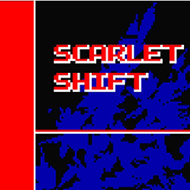

SCARLET SHIFT is a bold and dynamic action puzzle-platformer built on the principle of transformation. From the very first level, players are thrust into scenarios where shifting forms isn’t just a bonus—it’s essential. Each level is crafted so that no single form can solve every challenge: movement, combat, and environmental puzzles all demand you switch, adapt, and think ahead. What seemed like a combat-heavy game unfolds into a rich dance between forms, timing, and choice.
At the heart of SCARLET SHIFT is the ability to change between three (and later hybrid) forms, each with distinct strengths and drawbacks. Mastering when to shift—and how quickly to do it—becomes second nature. The forms are not merely gimmicks; they redefine how you traverse obstacles, confront enemies, and solve puzzles.
Levels in SCARLET SHIFT don’t just test reflexes—they test your judgement. You’ll frequently encounter areas where one form opens a route that’s blocked in another. Enemies are placed to punish overuse of any single form. Many puzzles layer multiple mechanics: you might need to dash in agile form, then switch to force to break a wall, then to utility to open a hidden door behind it.
Combat in SCARLET SHIFT is fast, reactive, and rewards adaptability. Enemies often have weaknesses only accessible by a specific form, which forces you to read the situation instead of brute-forcing it. The fluidity of combining movement, shift toggling, and attack decisions gives the game a rhythmic quality. Each run feels like an improvisation, not a fixed script.
SCARLET SHIFT encourages replay because each level can be approached in many ways. Do you favor speed, power, or clever utility usage? Each decision changes your path. Over time, you unlock new abilities or buffs tied to each form—such as extended dash, increased power, or extra interactions—that further personalize your approach. Replay value also comes from hidden secrets and alternate routes that become accessible only when you’ve mastered fluid shifting.
SCARLET SHIFT shines not because its mechanics are complicated, but because it demands you think in motion. The constant tension between forms transforms each stage into a puzzle of flow, survival, and adaptation. As you grow more comfortable with its rhythm, the game becomes a dance where precision and creativity are equally rewarded. Each new level asks not just “Can you beat this?” but “How will you beat this?”